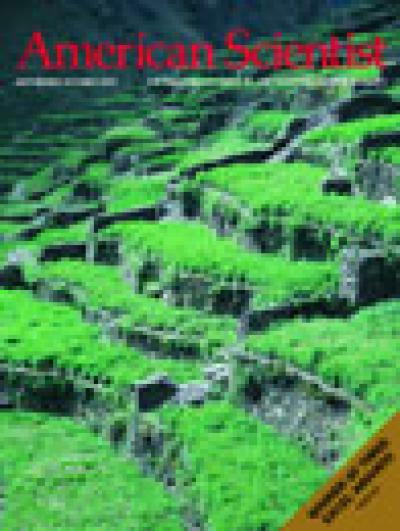Magazine
September-October 2002

September-October 2002
Volume: 90 Number: 5
People living on the eastern side of the Andes in Peru and Bolivia must cultivate crops under challenging high-altitude conditions. As this photograph of family plots on the flanks of the Cuyo-Cuyo valley attests, luxuriant growth of potatoes is possible on hillside terraces, a common strategy for farming steep terrain. Indigenous farmers in this region also benefit from a clever strategy they have worked out to forecast the weather: Using naked-eye observations of stars in midwinter, they are able to predict how much rain will fall during the following summer and time their planting accordingly. In "Ethnoclimatology in the Andes," Benjamin S. Orlove, John C. H. Chiang and Mark A. Cane describe this traditional practice and explain how they uncovered its scientific basis.
In This Issue
- Astronomy
- Biology
- Communications
- Computer
- Economics
- Engineering
- Environment
- Ethics
- Evolution
- Mathematics
- Physics
- Policy
- Psychology
- Sociology
- Technology
Deep-Ocean Life Where Oxygen Is Scarce
Lisa Levin
Biology Evolution
Oxygen-deprived zones are common and might become more so with climate change. Here life hangs on, with some unusual adaptations
Ethnoclimatology in the Andes
Benjamin Orlove, John Chiang, Mark Cane
Anthropology Physics
A cross-disciplinary study uncovers a scientific basis for the scheme Andean potato farmers traditionally use to predict the coming rains
Protein Folding and Misfolding
Jonathan King, Cameron Haase-Pettingell
Biology Evolution
The exquisite three-dimensional structures of proteins allow their diverse functions, but exactly how proteins fold remains a puzzle
Observing the Beginning of Time
Craig Hogan
Physics
New maps of the cosmic background radiation may display evidence of the quantum origin of space and time
